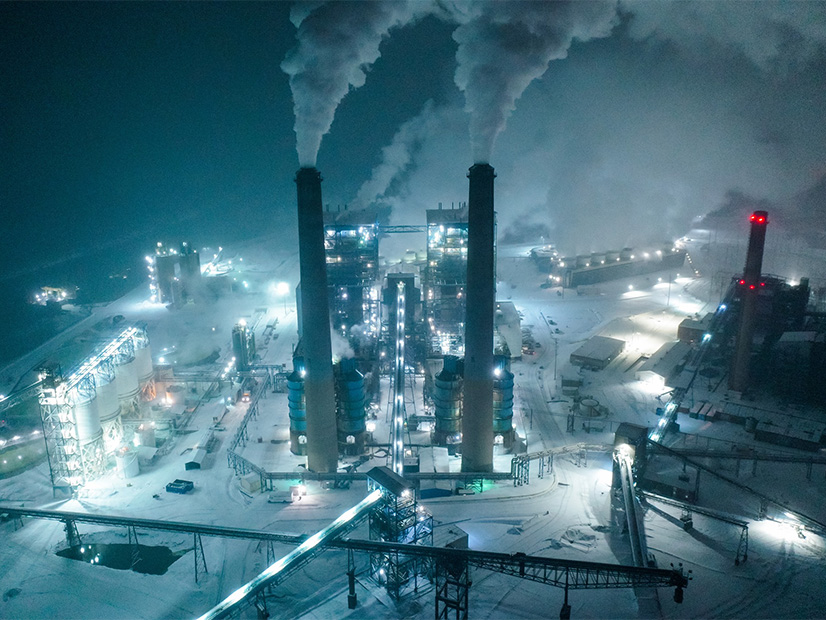CARMEL, Ind. — MISO is making slow progress on its plans to handle electric storage assets that aim to provide transmission services while also offering into the energy markets.
During a Market Subcommittee meeting Thursday, American Transmission Co.’s Bob McKee said his company intends to use the $8.1 million, 2.5-MW Waupaca Area Storage Project in Wisconsin for market and transmission purposes. The project was approved under MISO’s 2019 Transmission Expansion Plan as the RTO’s first — and currently only —transmission-only storage asset. It’s expected to be in service late this year.
“We want a clear path to know what we need to do to pursue this,” McKee said, referencing MISO’s allowing the project to furnish market services when it’s able. “We would urge MISO not to delay.”
MISO’s Michael Robinson said the grid operator might pursue one-off service agreements for its first dual-use energy storage projects instead of trying to finish lengthy tariff edits in time for interconnection.
“We think we have a defined path for where we’re going here,” Robinson said.
MISO has said for several years that it likely will require dual-use storage to first enter the generator interconnection queue before submitting energy offers, like any other generation asset seeking grid treatment. The Waupaca project has yet to apply to enter the queue.
Robinson said storage serving as transmission assets will be free to participate in any market, provided it can still address a transmission need.
But he said MISO and stakeholders still have work ahead regarding how the resources will collect both market compensation and transmission revenue requirements without being overcompensated. Robinson also said MISO must figure out whether storage assets should prioritize their market obligations or their transmission obligations during maximum generation emergencies.
Multiple stakeholders urged MISO not to rush tariff changes. Clean Grid Alliance’s Natalie McIntire asked for a “robust” stakeholder process that “fleshes out all details” before it drafts an overarching revision filing.
Market Interface Retirement Postponed
MISO has delayed retiring its aging market user interface (MUI) until Feb. 15 to accommodate members who haven’t yet switched to the new system.
“Everyone knows the end is near for the legacy MUI,” MISO’s Shawn McFarlane warned. “I think this is it; there won’t be any further pushback in terms of dates.”
Staff originally intended to retire the interface on Jan. 18, but some market participants have been slow to migrate their operations to the new system. The grid operator has been running both the old and new interfaces in parallel since early September.
Roughly 300 MISO customers use the nonpublic MUI to make energy offers and bids in the MISO markets. The upgrade is part of the RTO’s ongoing market platform replacement.
The grid operator is entering the fifth year of a multistage swap of its older, more rigid market platform for a newer modular one that can host more complex market offerings.
2 Conservative Ops Declarations in January
Frigid weather compelled MISO to declare conservative operations twice in late January.
The grid operator issued the alerts Jan. 20-21 for its South region and again on Wednesday for the northern part of its Midwestern footprint. Neither alert escalated into a maximum generation emergency or warning.
Under conservative operations, MISO requests members return generation and transmission facilities undergoing maintenance to service, if possible.
The RTO earlier declared conservative operations and a maximum generation emergency warning in the first week of January for its Central and North regions. Cold weather was again the culprit behind the close shave. (See Near-emergency Follows MISO’s Winter Warnings.)
MISO has been warning stakeholders since last fall that a generation emergency was a real possibility in January. While it experienced one close call, the month is nearly over and the system remains emergency-free.
MISO Independent Market Monitor David Patton said he has observed more coal-fired generation usage in the footprint with high natural gas prices. However, he said some facilities have been conserving coal to preserve their winter inventories, as railroad coal deliveries remain dogged by labor shortages.
Patton said that strategy will likely reduce coal capacity factors in winter. He added that he’s working with resource owners so that coal resources’ facility-specific reference levels “reflect the opportunity costs associated with maintaining winter coal inventory.”



